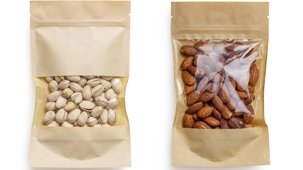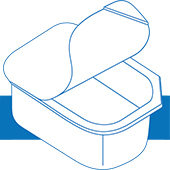The best environment for storing nuts is a dry, cool and completely closed environment. Because heat, humidity and secondary pollution cause spoilage of these products.
The growth of mold in nuts due to improper storage conditions can lead to irreparable risks for the consumer. One of the types of fungi that grows in these products is Aspergillus fungus, which causes the production of aflatoxin, which is one of the most harmful toxins.
Aspergillus is a member of aerobic microorganisms, so by using the modified atmosphere packaging method, oxygen can be removed from the reach of this microorganism, thus it will prevent the growth of this fungus and ultimately the production of aflatoxins.
Also, by injecting proper percentages of nitrogen gases and carbon dioxide, the shelf life of these products can be increased and the organoleptic properties of nuts can be preserved for a longer period of time.
Comments
Post comment
Comments sent by you will be published after the approval of the website administrator.


